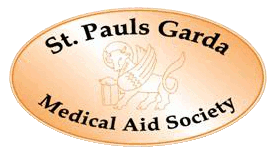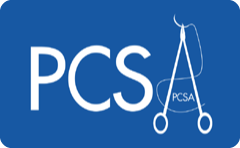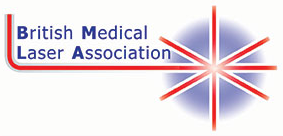 Download this information as a PDF
Download this information as a PDF
An ingrowing toenail is a common condition which may cause discomfort or become infected. Various treatments can be given by a doctor or a person qualified to diagnose and treat foot disorders (a chiropodist). See Dr Buckley if you have symptoms of infection around the nail, particularly if you have diabetes, a poor immune system or other foot problems.
What is an ingrowing toenail?
The nail becomes ingrowing when the side of the nail cuts into the skin next to the nail. This can become painful. The skin next to the nail may also become infected or inflamed. Any toe can be affected, but it is usually the big toe. It is a common problem, especially in teenagers and young adults.
What causes ingrowing toenails?
Ingrowing toenails are usually caused by a sharp spike of nail growing into the skin beside it. This can happen as a result of various factors. Not trimming your nails correctly, wearing poorlyfitting shoes or tight socks, and sweating a lot (during exercise for example) can all contribute. Shoes which force the toes towards each other encourage the nail to grow into the skin. For example, tight shoes, high heels and pointed-toe shoes. Active, sporty people may be more prone to ingrowing toenails as they sweat more. Ingrowing toenails may occur more often in people who have nails which are deformed in some way. Often there is no apparent reason why it occurs.
It is also more common in people who cut their toenails very short and round. The correct way of cutting nails is straight across (see below). This helps the nail to grow normally and may prevent ingrowing toenails from developing.
Other possible causes are injury to the nail, a fungal infection of the nail, or possibly, medication such as isotretinoin.
When a spike of nail pierces the skin of the toe, it allows the germs that are normally harmlessly present on the skin to get underneath the skin and cause infection.
What are the symptoms of an ingrowing toenail?
Early on, the skin around the ingrowing nail may become reddened and feel slightly tender. If it progresses and becomes infected, it may become more swollen, red and painful. If the infection gets worse, there may be some yellow or green fluid (pus) oozing from around the nail. It will become even more painful and there may be an overgrowth of skin around the nail.
What is the treatment for an ingrowing toenail?
Ingrowing toenails are usually treated by Dr Buckley or a person qualified to diagnose and treat foot disorders (a chiropodist). A newer term for chiropodist is podiatrist. In some cases, surgery is helpful.
If caught early
If the ingrowing part of the nail is small, it may be prevented from becoming worse, and sometimes cured, by the following. This treatment may be given by a podiatrist or GP, or you may be shown how to do it yourself:
- Soak the toe in water for 10 minutes to soften the folds of skin around the affected nail.
- Then, using a cotton wool bud, push the skin fold over the ingrown nail down and away from the nail. Do this starting at the root of the nail and move the cotton wool bud towards the end of the nail.
- Repeat each day for a few weeks, allowing the nail to grow.
- As the end of the nail grows forward, push a tiny piece of cotton wool or dental floss under it to help the nail grow over the skin and not grow into it. Change the cotton wool or dental floss each time you soak your foot.
- Do not cut the nail but allow it to grow forward until it is clear of the end of the toe.
- Then cut it straight across and not rounded off at the end.
If the nail fold becomes infected
Symptoms of infection are increasing pain, swelling and redness near the ingrowing nail, and yellow or green fluid (pus) near the nail or under the nearby skin. If the infection is getting worse, you may have a throbbing pain, redness spreading over the toe, or a high temperature (fever).
Antibiotics may be needed to treat infection. It can also help to soak your feet in dilute Dettol or Savalon, then carefully dry and rest your feet.
When should I see a doctor?
See Dr Buckley if:
- You have persistent and troublesome symptoms from the ingrowing nail.
- You have symptoms of infection (as above). If you also have diabetes or a poor immune system, see a doctor urgently, as infections will need treating quickly.
- You have a condition affecting the nerves or feeling (sensation) in your foot. For example, if you have loss of feeling due to diabetes (diabetic neuropathy) affecting the feet. This is because a loss of sensation can make you unaware of problems in the foot, such as a deep infection. So, you will need careful assessment and monitoring. You may be referred to a foot clinic or podiatrist.
For persistent ingrowing toenails
- It may be necessary to remove part of the nail. The usual procedure is as follows:
- The toe is made numb and painless by injecting local anaesthetic into the base of the toe.
- The toenail is then cut with scissors longways a few millimetres in from the offending edge.
- It is cut right up to the base of the toenail and the offending edge can then be pulled out.
- The nail bed in the corner that was removed is destroyed using RadioSurgery.
- This helps to stop the edge of nail regrowing and prevents relapse.
- The nail is then dressed.
Once the anaesthetic wears off the toe may be sore so you may need mild painkillers such as paracetamol for a day or so. You will probably have to wear a bandage for a few weeks till the wound dries up. During this time you will not be able to have a bath or go swimming. You should not do any strenuous exercise, such as running for a week after the surgery. After the operation, the nail will regrow but will be narrower than before.
How can ingrowing toenails be prevented?
- Cut your nails straight across; do not cut down the sides. Never brake off the ends of your nails with your fingers. Always use a scissors or nail nippers. The corner of the nail should be visible above the skin. (Tip: it is easier to cut nails after a bath or shower, when they are soft.)
- Keep your feet clean and dry. Let air get to your toes when possible.
- Avoid tight shoes and use cotton socks rather than synthetic.
- If you have diabetes, you should take extra care when cutting your nails:
- Cut the nail straight across or follow the shape of the end of the toe, but be very careful not to cut too low at the sides as above.
- Gently file any sharp edges with a nail file.
- If you have any loss of feeling in your feet, you should visit a chiropodist (podiatrist) to have your nails trimmed, rather than doing it yourself.
- If you can't see your feet or nails very well, you should visit a chiropodist (podiatrist) to have your nails trimmed, rather than doing it yourself.














